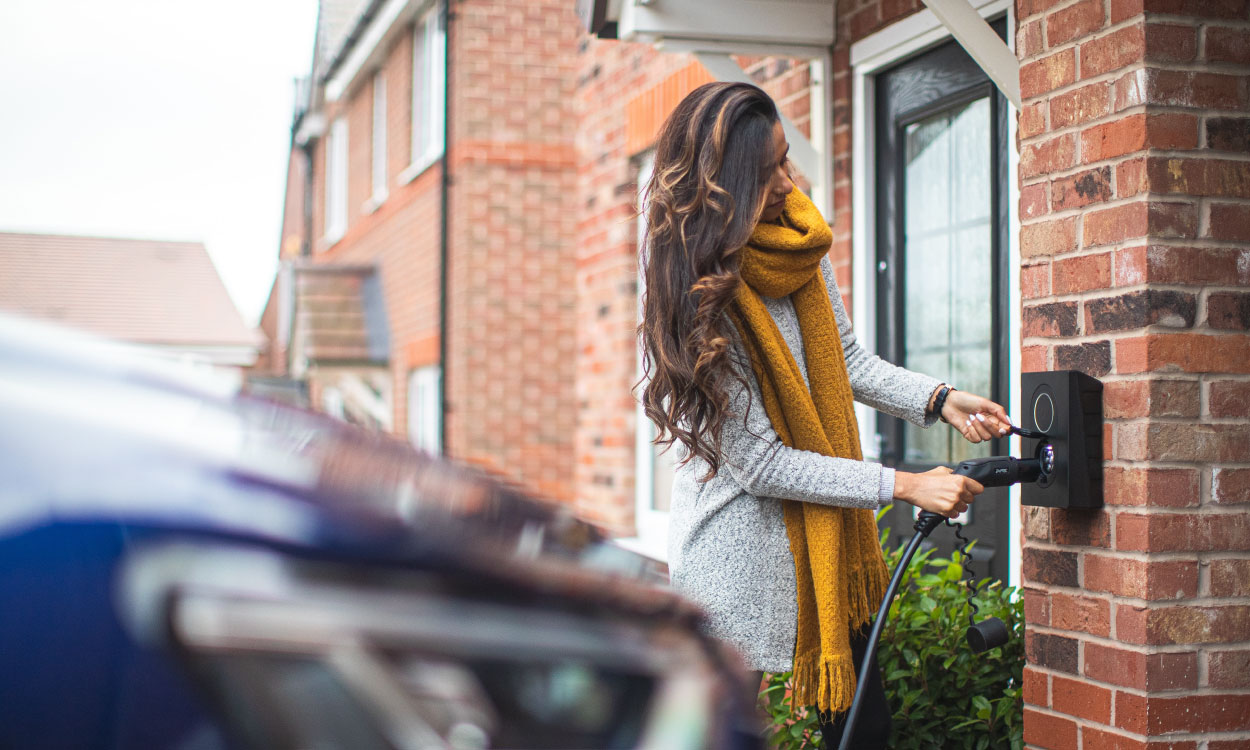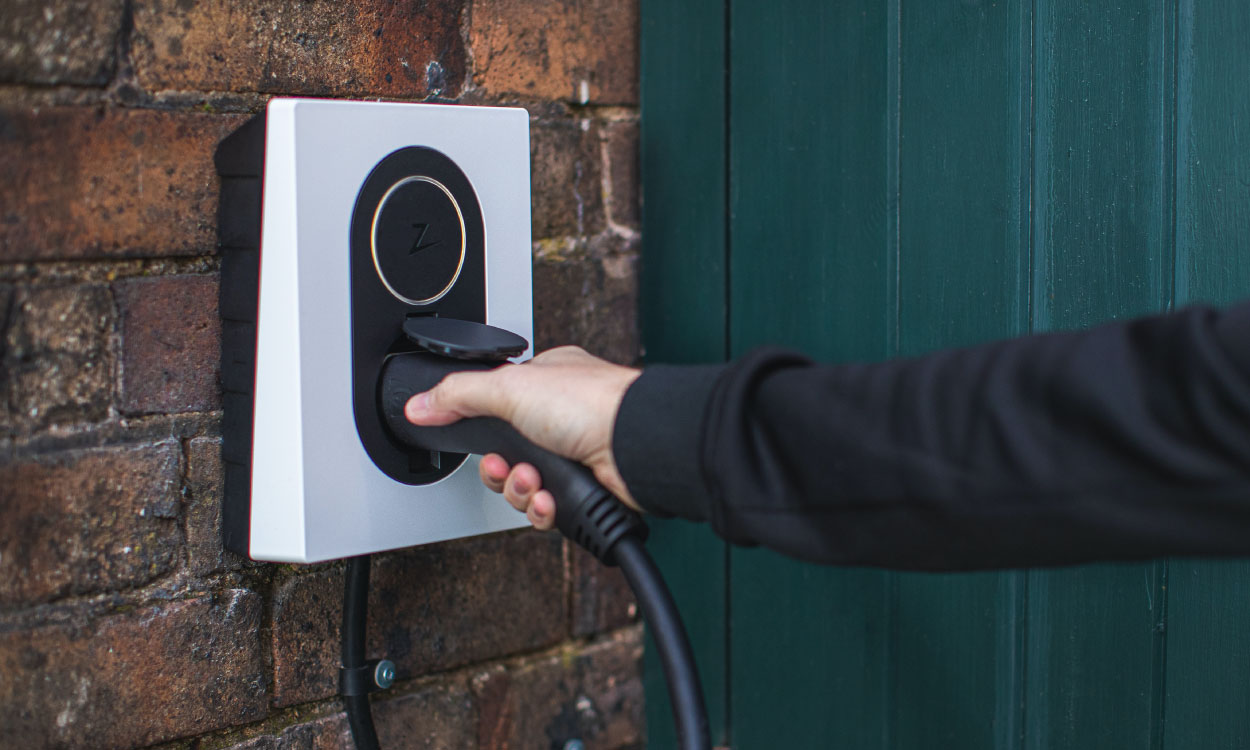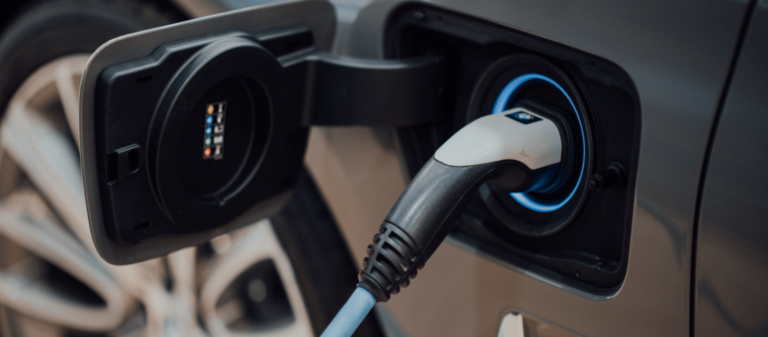This comprehensive guide is dedicated to charging your electric car at home including what type of charger you need to how much it will cost.
One of the big selling points for many drivers who opt to buy an electric car is the fact that they can charge their vehicle from their own home.
From wall box chargers to smart chargers, getting to grips with how to charge electric cars at home is a key step for any new EV driver. It’s important to make sure you’ve correctly installed the right equipment and that you know how to use it for an optimised output.
This Evaa complete guide to charging your electric car at home will cover everything from what kind of charger to install to how much it will cost and how long it will take.

Electric Car Charging at Home
Can You Charge An Electric Car At Home?
Providing you have off-road parking such as a garage or driveway and can safely get power to your vehicle then yes, you absolutely can and should charge your electric car at home.
With the popularity of electric cars on the rise, having the means to charge an EV is not only practical for you but it can also help to boost the value of your home to prospective buyers too.
If you don’t have access to off-road parking and still want to charge your car at home, try to avoid running wires across roads and pavements.
Can You Plug Your Car into a Regular Outlet
Technically, yes, you can plug your electric car into a regular outlet however we’re pretty sure you’re not going to want to.
A standard three-pin wall socket will take around 35 hours to charge a medium-sized electric car. Waiting over a day for your car to charge is less than ideal.
The best way you can ensure a speedy charge is to install a wall box charger.
Wall Box Chargers
Wall box chargers allow you to charge your electric vehicle quickly from your own home. Wall boxes, also known as electric vehicle wall charging units, come in various forms and powers. The stronger the power of your wall box, the quicker it will take to charge your car.
When it comes to choosing a wall box charger you can choose from either a tethered or untethered wall charging unit.
A tethered charging unit has the power lead already attached, meaning all you have to do is pull up and plug your car in. An untethered wall charging unit however has no charging wire and instead you’ll need to use the power leads that come with your car.
Do All Electric Cars Use The Same Plug?
The majority of electric vehicles use a Type 2 connector. This is the plug that has been mandated by the EU and all plug-in EV’s from 2014 will use this plug. Some electric cars on the road still use the older Type 1 connector but adaptors are available if you need one.

Installing An Electric Car Charger at Home
Cost of Installing An Electric Car Charger at Home
The cost of installing an electric car charger at home depends on various aspects including how powerful you need your charging point to be and the smart features you’d like it to include. The slowest chargers can start at just £100 whilst the addition of smart features such as wireless control via a smartphone app and a more powerful output can see prices rise up to £1000.
Many manufacturers offer free installation once you’ve bought the charging unit and some major electric car brands actually provide a wall box as part of the vehicle price.
How To Install An Electric Car Charging Point at Home
The easiest way you can install an electric car charger at home is through the manufacturer that you bought the wall box charger from. Most will offer free or discounted installation making the process as easy as possible for you.
If you want a higher rate of power to boost the charging time of your EV then you’ll need to first find out if you have a three phase connection. Most homes in the UK are connected with a single phase connection which essentially means your network has one live wire. A three phase connection has three live wires that you can connect to, thus providing a faster power supply.
You can check your fuse box to see if you have a single or three phase connection and if you’re interested in upgrading the best thing to do is to speak to your energy provider.
Vehicle to Grid Charging (V2G)
Vehicle to grid charging is seen by many as the future of home EV charging. It’s an advanced form of power management that’s currently being trialled and allows electric car drivers to charge their cars based on grid demand.
The concept works by allowing drivers to specify how long they want their car to charge for and the minimum battery percentage they want to reach. For example, you may decide that you want to plug your car in at 9pm and by 7am have reached 80% battery.
Your car will then charge overnight at key times when the demand on the grid is low but if whilst your car is plugged in grid demand rises, the charger can take power back from your car to power your home and sell excess energy to the grid.
The current V2G trials predict that this could save homeowners up to £350 a year on their energy bills.

Charging An Electric Car at Home
How Fast Can You Charge an Electric Car at Home
For most electric cars, a standard 7kW wall box will charge a small car such as a Mini in around three and a half hours. Larger cars will take around six hours to reach full capacity. If you upgrade to the three pin power system that we mentioned earlier than you can potentially charge a large car in as little as two hours.
How Often Should You Charge an Electric Car At Home
You can charge your electric car at home as often as your vehicle needs it. How you charge your EV will depend on your lifestyle. Most drivers choose to charge their car fully overnight and top up with battery boosts as and when needed.
Overnight charging allows you to plug your car in whilst you sleep in a similar way that you do with your mobile phone or tablet and ensures that when you need your car the next day it’s always fully charged.
Many EV drivers choose to charge their car at home overnight and then use public charging points such as at work or in car parks for extra boosts.
Some people choose to charge their EV’s every night whilst others prefer to let their battery run right down before they plug in.
Many car manufacturers have guidelines for individual models on how to manage battery capacity. Most suggest charging your car to 80% capacity but be sure to familiarise yourself with the recommendations for your individual vehicle.
Final Thoughts
Charging your electric car at home is practical and efficient and once you’ve made sure you have access to the right equipment, you’ll be able to create an at home charging routine that works for you.
For many EV drivers a home charging station is essential however it’s not the only option. Public electric vehicle charging points are becoming more and more of a popular sight in car parks, petrol stations and at workplaces.
The Evaa network manages electric charging stations across the UK and no matter where you are, you’re never far from a charging point to give your battery a boost.
Contact the Evaa team to book a demo and find out more about our revolutionary electric vehicle charging services.



